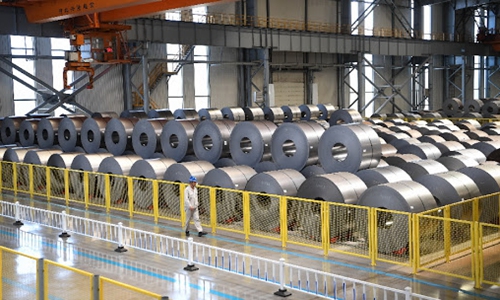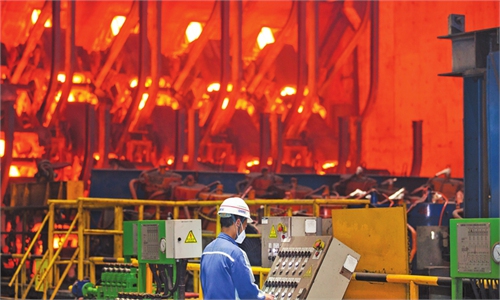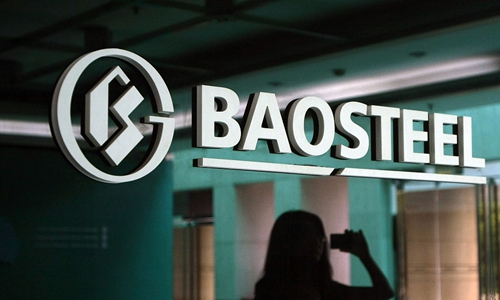COMMENTS / EXPERT ASSESSMENT
Pipe dream for US and EU to form a clique on world steel and aluminum trade

File Photo: Xinhua
The US and EU have recently reached an agreement to end a three-year dispute over US tariffs on steel and aluminum imported from the EU. The US will replace the existing tariffs on EU steel and aluminum products under the so-called Section 232 with a tariff-rate quota (TRQ) system. Consequently, the EU will drop its retaliatory tariffs against US goods.
It was supposed to be a bilateral deal between the US and Europe with no other country involved. However, with its eyes fixed on China, the US government again chose to involve China, by allegedly addressing the "worldwide excess steel and aluminum capacity mainly centered in China." The move simply corrected previous trade restrictions in the US which obviously went against WTO rules. Now, Washington attempts to portray it as a joint move with the EU to deal with the "China challenge."
The steel industry in the US has seen a declining trend since the 1960s with shrinking size and employment. In 1967, the country became a net importer of the product. However, the steel industry and the United Steelworkers have a very important position and a strong influence in US politics. Yet, the forces of the economy cannot be reversed. The US has declined, from being a leader in the steel industry to just produce 4.7 percent of the world's steel in 2019, while importing 6.2 percent of the global output.
The US was once a main destination of China's steel exports. However, because of the continuous anti-dumping and anti-subsidy investigations launched by the US against various Chinese steel products, its exports to the US reached only 784,000 tons in 2017, the year before the US implemented the 232 measures.
China is the world's largest producer of steel, accounting for 56 percent of global production in 2020. But its steel products are mainly for the domestic market, with exports of more than 53 million tons, accounting for only 3.8 percent of its total output of 1.3 billion tons. Even so, China remains the world's largest steel exporter, which is why the US and Europe have been blaming it for the world's steel gluttony for years.
Indeed, China experienced a periodical steel overcapacity and also took a series of adjustment measures. However, for the world's largest developing country, steel remains a product with broad market, especially in the automobile and machinery manufacturing, and infrastructure development sectors.
China's steel production is not export-oriented at all and the change of the world market has little impact on its steel industry.
The US and EU are targeting China's steel industry for its alleged overcapacity, which is directly related to the homogenous competition and capital concentration of steel products. China's steel industry is highly competitive, with only one third of state-owned enterprises, and there is no need for the government to subsidize such a mature sector of the economy. Instead, there are subsidies for companies that cut capacity voluntarily.
In fact, the EU and the US complement China's in steel industry. They are the first and second largest steel import economies respectively which indicates that their capacity simply cannot meet their needs. The US, in particular, is in need of a lot of steel with the vow of the Biden administration to rebuild the nation's infrastructure.
As for China, its best choice is to speed up the building of the new economic development pattern of "dual circulation", enhancing its willpower and focusing on its own agenda. The iron and steel industry has long been a model, playing a main role in the domestic. Even if some countries erect discriminatory barriers, China's strong competitiveness can ensure that its steel industry can remain active in international markets, winning space for its own development and making its contribution to the world's growth.
This commentary is based on an article written by Tu Xinquan, Dean of the China Institute for WTO Studies at the University of International Business and Economics in Beijing. bizopinion@globaltimes.com.cn


